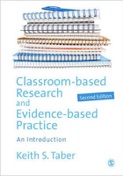Educational Research Methods

A site to support teaching and learning...

Approaches to
qualitative data analysis
Approaches to qualitative data analysis
"Books that describe ways in which quantitative data can be analyzed are…remarkable in the sense that they all say pretty much the same thing. … the quantitative researcher can pretty confidently plug his or her data into any statistical formula taken from any book, and will not be challenged by anyone about the procedure itself, as long as it suits the type of data and the research question asked.
The situation is very different for the qualitative researcher." (Tesch, 1990: 3)
Tesch, R. (1990). Qualitative Research: Analysis types and software tools. Basingstoke, Hampshire: The Falmer Press.
A model for qualitative data analysis approaches
Approaches to analysis of qualitative data are described in various ways, so it is always useful to read authors’ reports of how they carried out analysis as well as any label they give the approach. A common referent is ‘thematic analysis’
“Robson (2002) refers to four approaches:
•Quasi-statistical – where initially qualitative data is analysed to produce counts, and so secondary data of a numerical kind. Sometimes this approach may be used to test hypotheses, even though the initial data collected was qualitative.
•Template – where a formal analytical framework was developed as part of the research design (informed by the conceptual framework for the study), so that the analyst knows just what they are looking for in the data from the start. There may even be a ‘code book’ already set up telling the analyst how to code specific items found in the data.
-
•Editing – where the participants’ own words are used as text that can be edited into a form more suitable for reporting. This goes beyond selecting example quotes to illustrate findings (which might be used in reporting the outcomes of analysis undertaken, for example, using a template approach).
-
•Immersion – where the researcher spends considerable time reading and re-reading the data, ‘immersing’ herself or himself in the data to develop a deep understanding and allow insights to emerge.”

“Of course, this suggestion of four approaches is, like many of the schemes we use to describe research, not meant to imply a strict typology of types of analysis, as variations and hybrid approaches are possible. As always, what is important is that decisions about analysis make sense in terms of the kind of data collected, and the research question being answered.
So, in general, there tend to be two basic approaches to coding data:
• drawn from the conceptual framework informing the research
-
•grounded in the data collected in the study itself
In the former case, we already have a pretty good idea what kinds of information we are looking for in the data (i.e., confirmatory research), and sometimes we can be quite specific about this – depending on how strongly our reading of the existing literature has allowed us to make confident assumptions about the kinds of things we will find in our data. In the latter case, we have issues that we wish to explore, but feel that existing literature does not help us know exactly what we might be looking for, and so we use approaches that attempt to be open to what the data seem to be ‘telling us’ (i.e., discovery research).” (Taber, 2013)
(Consider whether you can identify aspects of these approaches to data analysis in some extracts from published studies)
This is a personal site of Keith S. Taber to support teaching of educational research methods.
(Dr Keith Taber is Professor of Science Education at the University of Cambridge.)
2016
Taber, K. S. (2013). Classroom-based Research and Evidence-based Practice: An introduction (2nd ed.). London: Sage.
